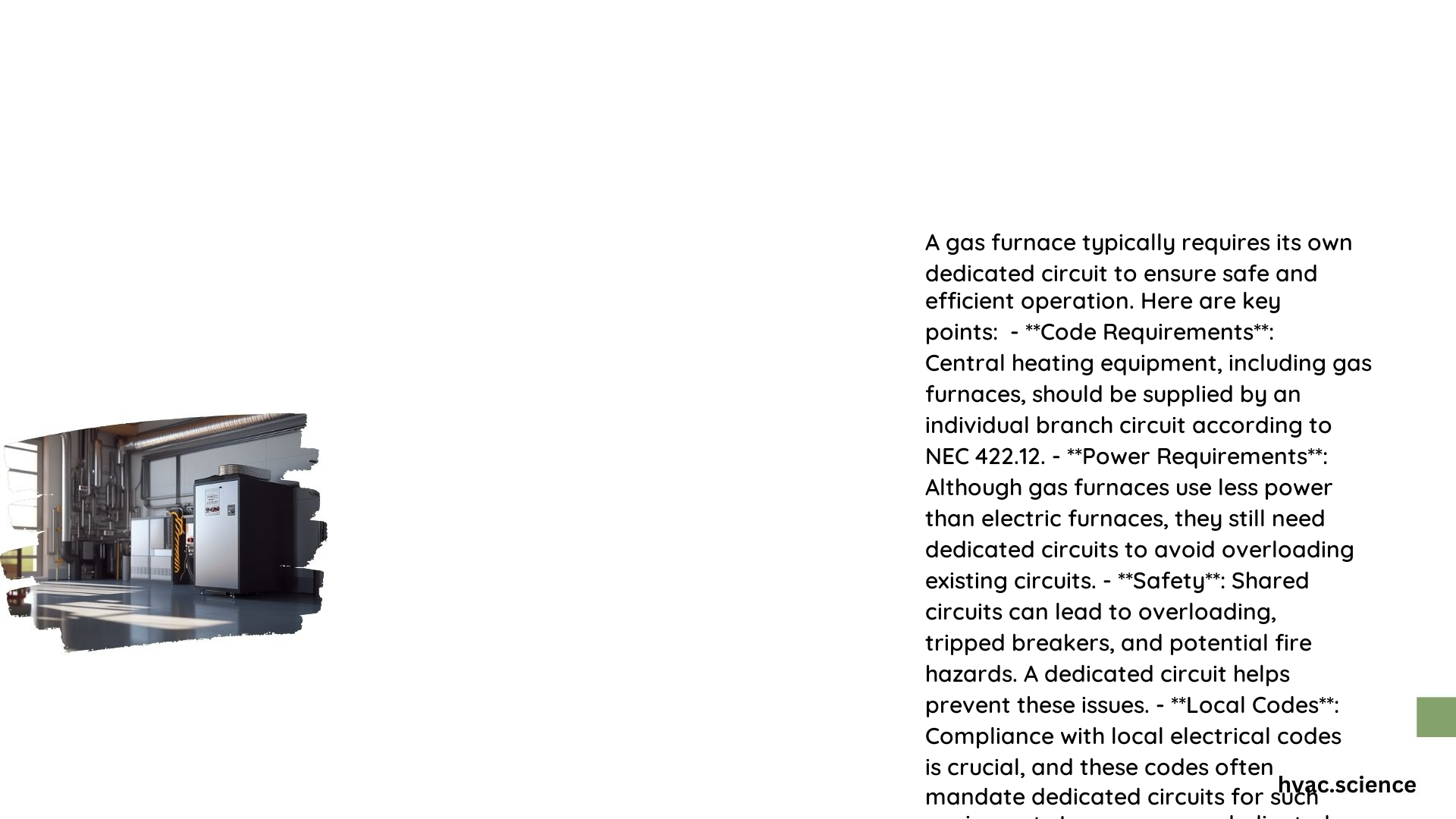A gas furnace typically requires its own dedicated circuit to ensure safe and efficient operation. This article will explore the electrical requirements, implications of sharing a circuit, and the technical specifications and installation process for a gas furnace’s dedicated circuit.
What are the Electrical Requirements for a Gas Furnace?
Voltage and Amperage
- Gas furnaces use electricity to power components such as the blower motor, circuit boards, and relays.
- They usually operate on a standard 120-volt circuit, but the amperage requirements can vary.
- A typical gas furnace might draw no more than 3 amps, but larger units could require more.
- The circuit breaker size for a gas furnace is often 15 amps, with 14-gauge wire being sufficient for most installations.
Dedicated Circuit Requirement
- According to the National Electrical Code (NEC), central heating equipment, including gas furnaces, should be supplied by an individual branch circuit.
- This means that a gas furnace should ideally have its own dedicated circuit to prevent overloading and ensure compliance with safety standards.
What are the Implications of Sharing a Circuit?

Potential Risks
- Sharing a circuit with other appliances can lead to overloading, which may cause the circuit breaker to trip frequently.
- This can result in inconvenience and potentially create safety hazards, such as overheating wires and increased risk of electrical fires.
- If the circuit is shared with high-power devices like power tools or other heating elements, it could lead to voltage drops and reduced performance of the furnace.
Code Compliance
- The NEC requires that central heating equipment be supplied by an individual branch circuit.
- Violating this requirement can lead to non-compliance with safety codes and potentially result in failed inspections or increased risk of electrical issues.
What are the Technical Specifications and Installation Process?
Circuit Breaker Size
- For most gas furnaces, a 15-amp circuit breaker with 14-gauge wire is sufficient.
- However, larger furnaces might require a 20-amp breaker with 12-gauge wire.
Installation Steps
- Turn Off Power: Ensure the main electrical power is turned off at the breaker box.
- Install Circuit Breaker: Add a new 15-amp or 20-amp circuit breaker to the breaker box.
- Run Wiring: Run the appropriate gauge wire from the breaker box to the furnace location.
- Connect Wiring: Connect the wiring to the furnace and ensure all connections are secure.
- Test Circuit: Use a circuit tester to ensure the circuit is working correctly and safely.
Estimated Costs
- The cost of creating a dedicated circuit for a gas furnace can vary depending on the complexity of the installation, the distance between the breaker box and the furnace, and local labor rates.
- On average, the materials might cost between $50 to $200, and labor costs could range from $100 to $500, depending on the electrician’s rates and the time required for the job.
In conclusion, a gas furnace requires its own dedicated circuit to ensure safe and efficient operation, comply with electrical codes, and prevent potential risks associated with shared circuits. By understanding the electrical requirements, implications of sharing a circuit, and the installation process, homeowners and HVAC professionals can ensure that their gas furnace is properly and safely powered.
